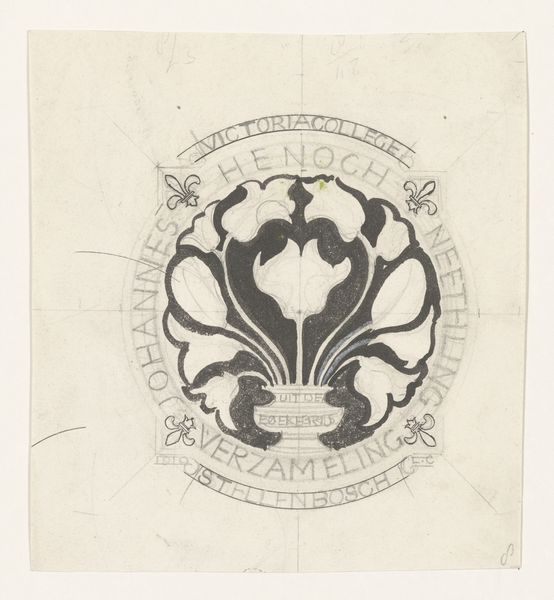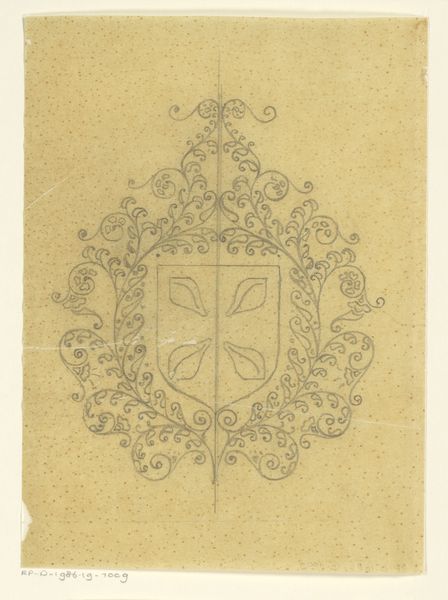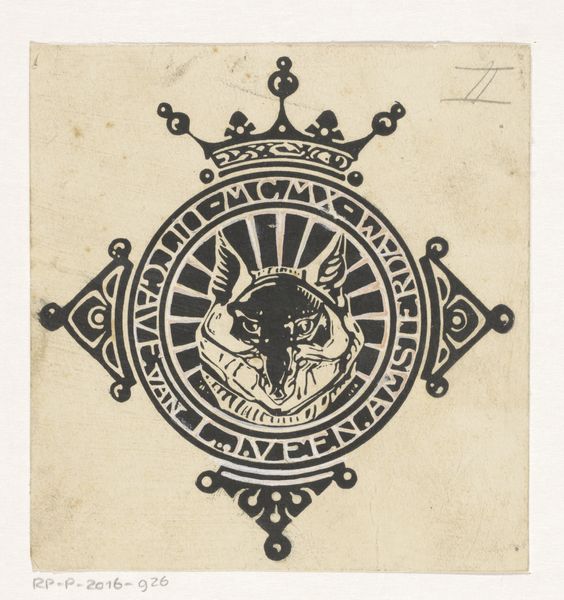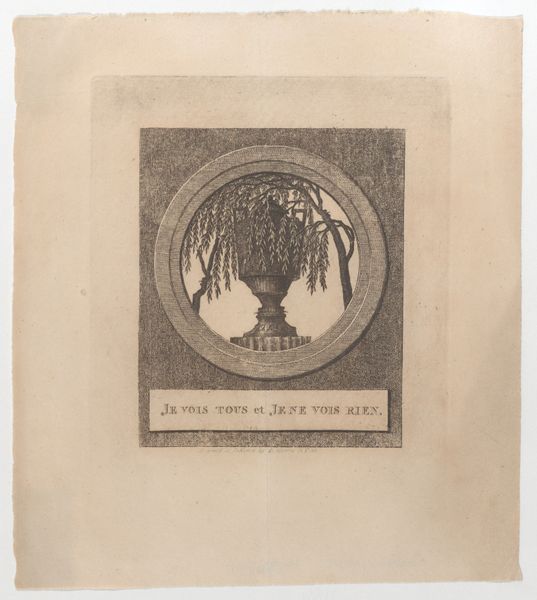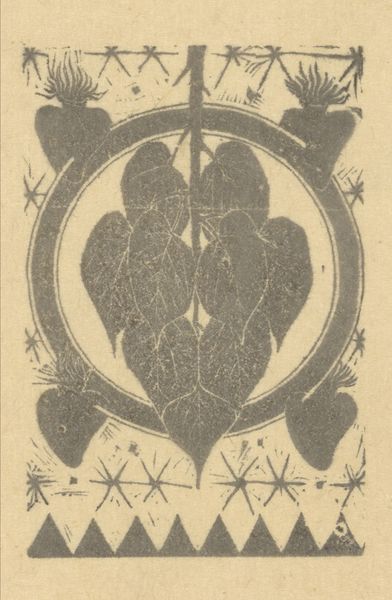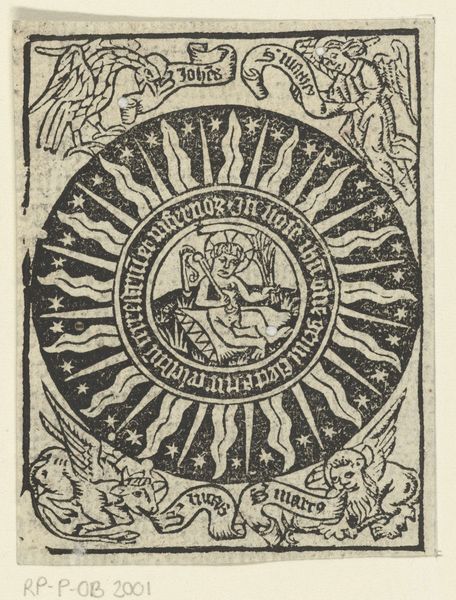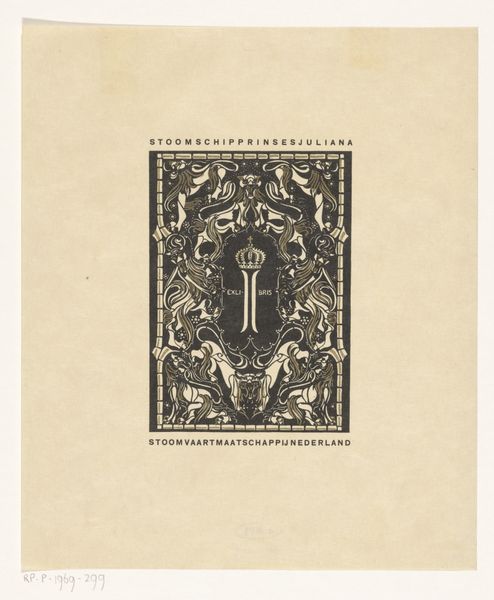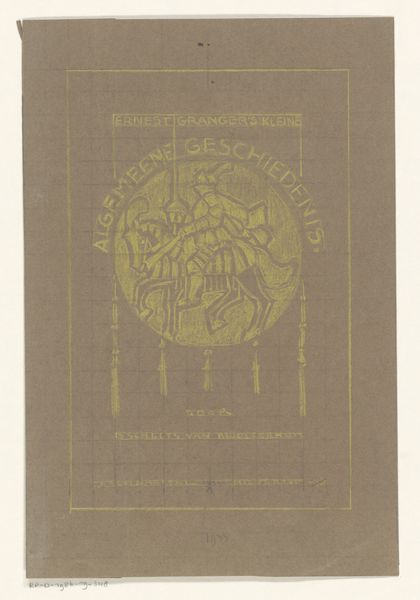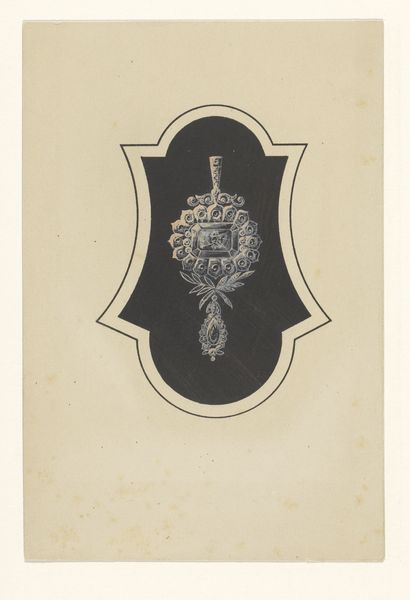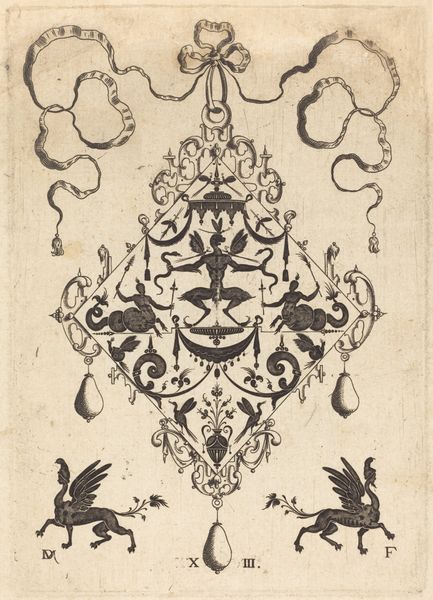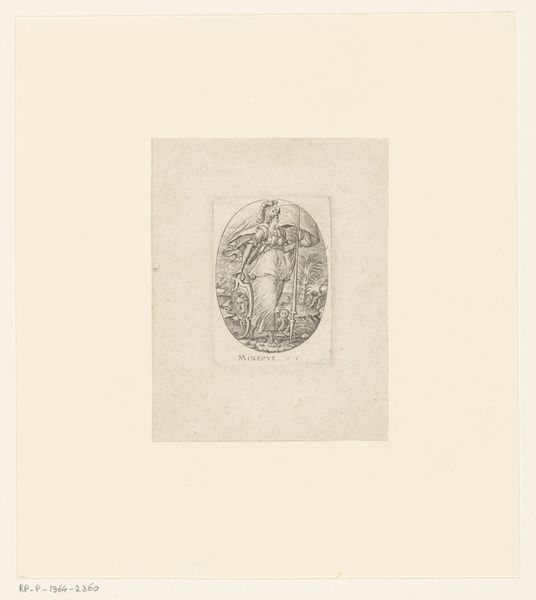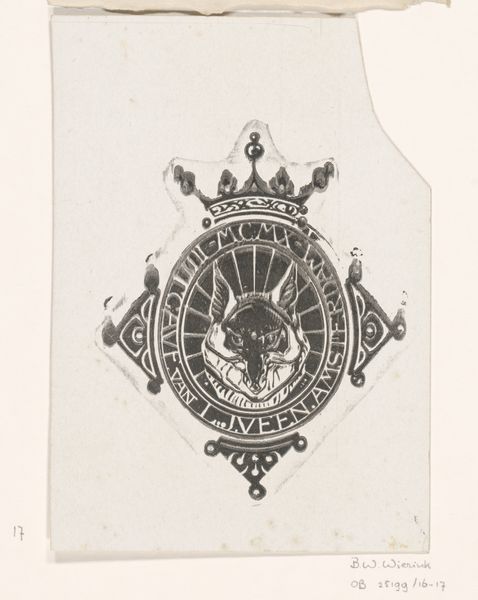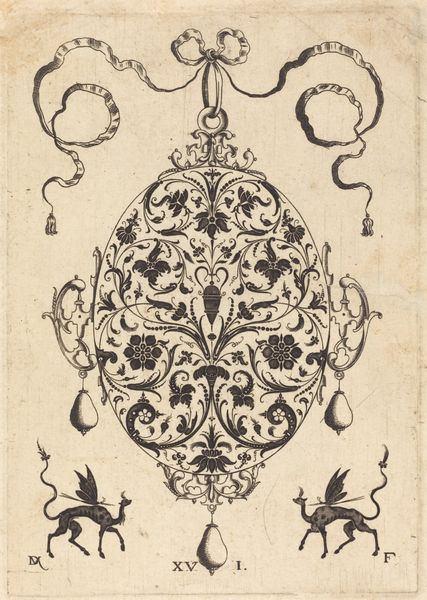
Ex libris van de Johannes Henoch Neethling verzameling ondergebracht bij Victoria College in Stellenbosch 1909
0:00
0:00
careladolphlioncachet
Rijksmuseum
graphic-art, print, woodcut, engraving
#
graphic-art
#
art-nouveau
# print
#
woodcut effect
#
geometric
#
pen-ink sketch
#
woodcut
#
line
#
symbolism
#
decorative-art
#
engraving
#
calligraphy
Dimensions: height 212 mm, width 177 mm
Copyright: Rijks Museum: Open Domain
Curator: Here we have a bookplate, or "Ex Libris," created in 1909 by Carel Adolph Lion Cachet. It was made for the Johannes Henoch Neethling collection, which resided at Victoria College in Stellenbosch. The medium is woodcut. Editor: Oh, it's immediately striking. The dark ink gives it such a weighty feel, doesn’t it? Almost medieval, yet with a clear art nouveau twist. I love how contained, almost secret, the central imagery seems within that bold border. Curator: It’s quite characteristic of Cachet, who blended symbolism with decorative art. Notice the lettering, the stylized flowers, even the geometric motifs around the perimeter—each element is carefully chosen. Bookplates traditionally signify ownership, but here, it elevates the idea to something more like a personal crest, hinting at the collector’s identity. Editor: Right, it's more than just a stamp; it's an assertion of taste, a tiny, carefully considered statement. It really makes me think about the hidden stories books hold. Do you think Neethling specifically commissioned it, to signify his passion? Curator: Undoubtedly. The stylized tulips, for instance, a popular motif of the Art Nouveau era, could symbolize affection and remembrance. The placement of “Uit de Boekerij”, which translates to "From the Library," acts as a bridge, connecting Neethling's identity to the essence of the collection itself. We tend to skim over such details but they speak volumes about that era’s visual culture and aspiration. Editor: Absolutely. In our image-saturated culture now, these handcrafted emblems feel like precious, intimate artifacts. Imagine carefully affixing this to the front of each prized volume. It also makes you ponder the weight of such collecting! How was this selection of literary work an integral reflection of identity? It seems less functional and more of a testament, doesn’t it? Curator: Precisely! And even the visual elements can carry different nuances across time; what felt daring and modern back then is seen differently. As with all symbolic languages, these impressions morph in new times and cultures. Editor: So true. Looking at this tiny portal, it speaks of history, artistry, and the pure joy of building a personal library. It definitely makes me want to go and bury myself in some dusty old volumes myself! Curator: Indeed, a small, beautifully considered emblem that offers insight far beyond its dimensions.
Comments
No comments
Be the first to comment and join the conversation on the ultimate creative platform.
